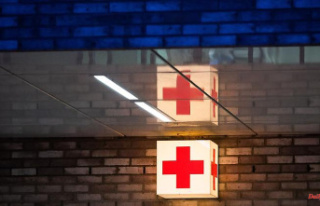Fierce fighting is raging in eastern Ukraine: the Russian military machine is advancing slowly but apparently unstoppably at several points on the front. How long can the Ukrainians withstand the superiority? A look at the map reveals major Russian successes.
In the fight against the Russian invading army, the Ukrainian military in the east of the country is coming under increasing pressure. In the arc of the front around Slovjansk, Kramatorsk and Bakhmut, Russian troops penetrated deeper into the rear at several breakthrough points. The bloodily bought land gains are still manageable. But the Russian approach is increasingly jeopardizing important supply lines for the Ukrainians.
On the Donbass front, the Ukrainian defenders are already surrounded on three sides by attacking Russian units. If the Russian offensive continues, the neighboring cities of Sieveyerodonetsk and Lysychansk are sooner or later threatened with encirclement. The industrial sites, each with around 100,000 inhabitants, could then become a second Mariupol.
The Russian approach in the region is obviously following a new strategy: unlike in the first weeks of the war of aggression, the Kremlin's military planners are no longer daring to make bold advances. Instead, the Russians are relying on their military superiority and on the brute continuous shelling from all guns. Detected Ukrainian positions are pounded with artillery, mortar shells and rockets until there is no resistance. Only then do Russian tanks advance.
The problem: The fighting does not stop at inhabited areas. On the contrary: Cities and settlements usually offer the defenders good cover. Important rail and road connections run right through the villages. The Russian barrage hits military targets and civilian installations indiscriminately.
At Popasna, for example, Russian troops have already driven a wedge deep into the Ukrainian front line in this way. The Russians have already been able to penetrate about twenty kilometers deep, and that in a region where the Ukrainians have well-developed positions. The old "line of contact" with the Russian-controlled separatist areas is not far from here. Experienced Ukrainian units have been preparing for a Russian attack here since 2014.
Meanwhile, further north-west on the other side of the front arc, Russian fighters reported the capture of the small town of Lyman. So far, Ukrainian authorities have only confirmed heavy fighting around this important transport hub. However, it has long been clear that the Russian military is pushing from the north in the direction of the two cities of Slovjansk and Kramatorsk: the pocket is also beginning to constrict from this side.
The embattled Lyman lies to the west of the conurbation around the cities of Sievjerodonetsk and Lyssychansk, which is still controlled by Ukrainian troops. There, the Siwerskyi Donets river acts as a natural barrier, separating the parts of the Donbass still held by the Ukrainians from the Russian-occupied areas. With the fall of Lyman, supplying the Ukrainian military near Sievjerodonetsk has become more difficult: the supply routes now lead through a corridor that is less than 50 kilometers wide north-east of Bakhmut.
The defenders in the east of the Ukrainians, who are inferior in material, equipment and ammunition, have so far not been able to counter the constant Russian shelling. The Russian offensive has progressed in small steps over the past few days. At times, Russian units even came dangerously close to the main road link to Sievjerodonetsk. "The Russian occupiers continue to fire at our positions," says the situation report of the Ukrainian general staff. Between the lines, the seriousness of the situation can be clearly felt in the brief formulations. "The enemy is trying to advance towards Bakhmut, cutting off our supply routes and cutting off our units from the bulk of the Ukrainian armed forces."












